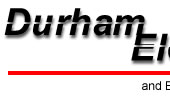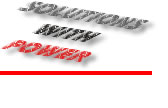Power factor is an energy concept that is related to power flow in an electrical system. To understand power factor it is helpful to understand the three components of electrical power existing in a three phase power system.
REAL POWER Is the electricity you use that is actually converted into useful consumption that creates light, heat and motion. Real power is measured in kilowatts (kW). Kilowatts are measured and recorded by your utility’s metering system. You are billed for the electricity you use in kilowatt hours (kWH).
REACTIVE POWER Is the power used to sustain the electromagnetic field in inductive and capacitive equipment. Reactive power is a non-working component. Reactive power is measured in kilovolt-ampere reactive (kVAR) and does not appear on your electricity bill.
TOTAL POWER or apparent power is the combination of real power and reactive power. This combination is totalized by your utility’s metering system and referred to on your electricity bill as kilovolt-ampere hours (kVAH).
 |
 |
 |
 |
||||||||||||
 |
 |
||||||||||||||
 |
 |
 |
 |
||||||||||||